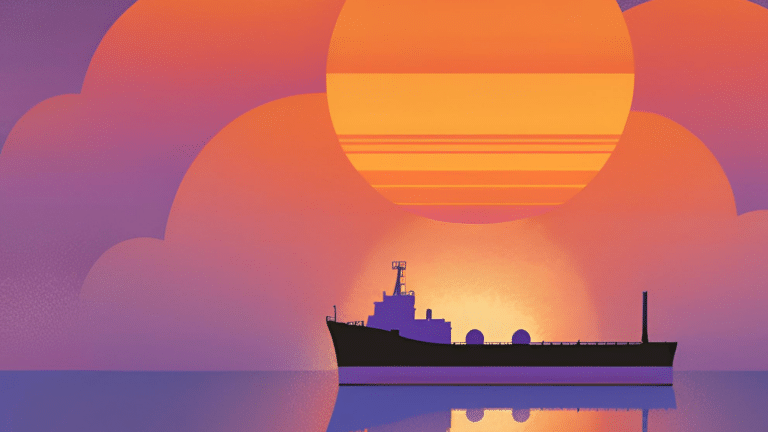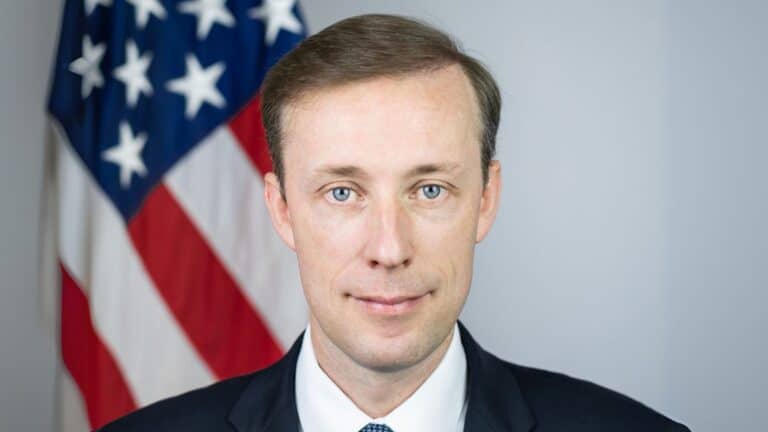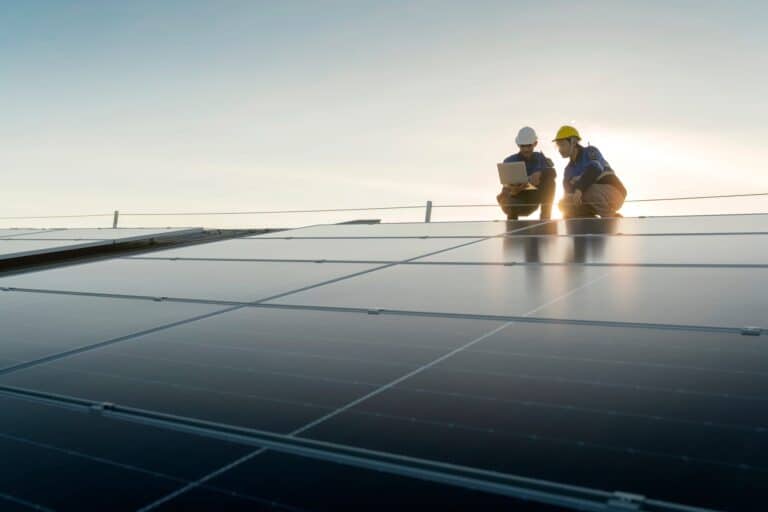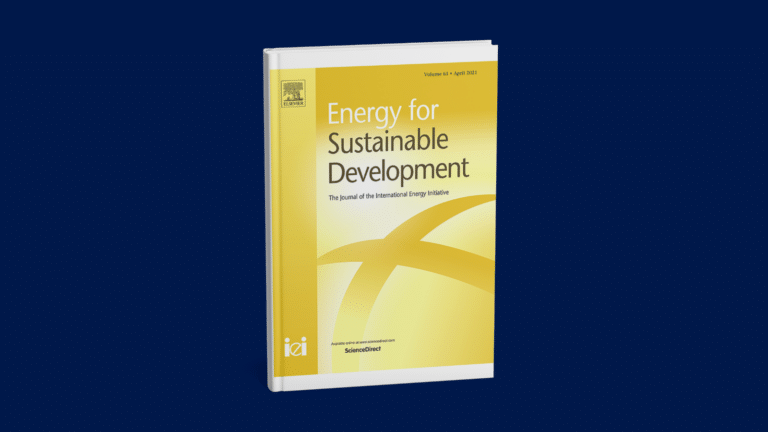This commentary represents the research and views of the author. It does not necessarily represent the views of the Center on Global Energy Policy. The piece may be subject to further revision. Contributions to SIPA for the benefit of CGEP are general use gifts, which gives the Center discretion in how it allocates these funds. More information is available at https://energypolicy.columbia.edu/about/partners. Rare cases of sponsored projects are clearly indicated.
In June 2022, the government of South Sudan acknowledged that Egypt had delivered equipment for resuming its long-dormant Jonglei Canal megaproject by dredging tributaries of the White Nile.[i] Earlier in the year, a “secret” deal between Egypt and South Sudan, as well as South Sudanese vice president Taban Gai Deng’s calls to push ahead with altering the flow patterns of the world’s longest river, unleashed a political frenzy in the capital Juba.[ii] For the minister of water resources and irrigation, Peter Manawa Gatkuoth, the megaproject was essential “to reduce extreme droughts/floods…” and “achieve integrated development in infrastructure, agriculture, [and] industry.”[iii] Supporters underlined the Jonglei Canal’s potential to address lack of access to clean drinking water, rural impoverishment, and extreme dependence on oil exports as the source of 90 percent of the government’s income. Yet the prospect of imminent construction generated an outcry from local communities.[iv] The project’s opponents asserted that dredging the tributaries would fatally destabilize the Sudd, Africa’s largest wetland and a key regulator of regional climate dynamics and source of an estimated USD $3.3 trillion in vital ecosystems services to one of the world’s poorest regions.[v] They alleged that this “sellout” of the national interest would deepen local hunger and conflicts, so that the water available downstream in Sudan and Egypt will increase by 5 to 7 percent.[vi]
Scholarship on the Jonglei Canal has concentrated on how dredging might impact the flooding regime and the contested local history to which it is linked.[vii] Because South Sudan is the world’s youngest state and one of the poorest and most war-torn, policy makers and academics have paid comparatively little attention to the broader geopolitical context of recent developments concerning the canal. Focused on that context, this commentary shows that the Jonglei controversy is the most recent example of how South Sudan’s leadership has leveraged the country’s potential to contribute to regional water, energy, and food security to balance external interests, fend off unwelcome intervention in its affairs, and ultimately shore up its tenuous sovereignty. Capitalizing on international worries over commodity price fluctuations and supply volatility, the ruling Sudan People’s Liberation Army/Movement (SPLA/M) has used promises to make its extensive resources available to regional and global investors to acquire a remarkable degree of geopolitical maneuverability that has helped president Salva Kiir Mayardit and his allies manage political threats.
The stakes surrounding the Jonglei Canal are high—for the country, region, and international community. While South Sudan is hugely dependent on imports of fuel, sorghum, and wheat, reveries of tapping into the country’s impressive agricultural and energy potential abound among diplomats, South Sudanese elites, and (prospective) foreign investors. The possibility of leveraging that potential to stabilize the Horn of Africa informs bilateral and multilateral approaches by aid donors for whom the war-torn region is strategic because of its proximity to Europe, the Middle East, and crucial trade routes; Western states and international organizations spend approximately USD $1.5 billion in assistance annually in South Sudan. Juba’s importance must also be understood against the backdrop of the tumultuous geopolitics of the Nile Basin, in which upstream and downstream riparian states—especially Egypt and Ethiopia—are at loggerheads over water and energy projects, threatening violent conflict between two historical strategic partners of the United States and its key European allies. Highlighting South Sudan’s significance to changing regional dynamics around oil and water, this commentary shows how some of Africa’s weakest states can take strategic advantage of anxieties over global commodity shortages and energy transitions.[viii] While such a posture is yielding tangible political benefits for incumbents, the developmental gains of partnerships with international donors and investors in addressing unequal access to energy and water are far less clear, as their track record in South Sudan illustrates.
South Sudan and Regional Geopolitics
Jonglei in Geographical and Historical Context
South Sudan’s resource potential, real and imagined, is central to Jonglei as a source of local and international controversy and to the country’s role in the geopolitics of the Nile Basin. It has abundant aggregate levels of water: at approximately 4,000 m3 per person, total annual renewable water resources are far above broadly used indices that mark 1,700 m3 as signifying “water stress” (experienced by most regional states, including Djibouti, Egypt, and Sudan).[ix] Moreover, for more than a decade, South Sudan has been a prominent African oil producer and member of the Organization of the Petroleum Exporting Countries (OPEC+), pumping about 150,000–190,000 barrels per day over the last few years. Almost every barrel of oil extracted from South Sudan is destined for export, and thus virtually all of its foreign exchange reserves and the lion’s share of its budget are dependent on oil.[x] South Sudan also has a huge scope for expanding food and energy production, including an estimated potential of 436 watts per square meter per year[xi] in solar energy.
The idea that South Sudan’s resources can help address regional and even global supply crunches has circulated for decades. Indeed, the Jonglei project was initially conceived as part of a colonial master plan to “optimize” the hydrology of the Nile Basin through dams and canals, to the advantage of political elites and export industries in Egypt and Sudan, both of which were deemed crucial to the British Empire.[xii] After Sudanese independence in 1956, the Jonglei Canal came to represent a push for top-down modernization through large-scale agricultural and hydroelectric projects, with Egyptian and European support.[xiii] This optimism about infrastructure-driven state building was typical of postcolonial states across Africa and Asia. However, groups in Sudan’s southern peripheries saw the canal as a casus belli, which was emblematic of their marginalization by the state. Construction halted when the SPLA/M started a 20-year rebellion that brought it to power in 2005 and led to South Sudan’s independence in 2011.[xiv]
Reversing Dependence: Oil and Water as the Midwives of Independence and Sovereignty
Grievances over how to manage water, land, and oil played an indispensable role in three long civil wars (1956–1972, 1983–2005, and 2013–2018) that have left the citizens of South Sudan highly vulnerable to economic and environmental shocks. Trust between the population and the state and between rival politico-military elites is extremely low, and the state of the country’s infrastructure and public finances is disquieting.
Remarkably, however, in view of such institutional fragility and violent internal divisions, South Sudan’s leadership has positioned itself as a strategic actor in regional petropolitics and hydropolitics. One of the few constants of the SPLA/M government since coming to power in 2005 is brinkmanship in oil and water dossiers as a means of articulating the case for South Sudan’s independence and then shoring up its weak sovereignty. As South Sudan’s first and so far only president Salva Kiir has sought to strengthen his authority at home and abroad, he has leveraged two key assets.[xv] Continual verbal promises, memorandums of understanding, and “political handshakes” to put South Sudan’s water, land, and energy at the disposal of foreign partners have bought Juba substantial diplomatic support and financial assistance, even if projects have consistently failed or remained unimplemented.[xvi] Similarly, vows to endorse vital interests of rivaling regional heavyweights have reduced pressures by neighbors and given Salva Kiir significant autonomy in regional politics without any need to do much in terms of infrastructure construction or treaty ratifications.
Such maneuverability in external relations is striking given that the viability of an independent South Sudan has long been questioned.[xvii] To convince external players, the South Sudanese government emulated the Sudanese state from which it seceded: deploying shrewd imaginaries of the country as a potential breadbasket and energy powerhouse for the region to strengthen processes of state building and consolidate the power of specific elites.[xviii] Like successive regimes in Khartoum, the SPLA/M leadership also signaled to the outside world that it was ready to help address long-standing global and regional shortages in food production, water availability, and energy supply.[xix] By doing so, it turned its own chronic financial scarcity and dependence on outsiders on its head.[xx] Indeed, by exploiting external worries over water, energy, and food security and letting foreign actors compete over who would be invited in to develop and/or benefit from its resources, it has rendered them dependent on its sovereign decisions and thereby encouraged the recognition of its authority rather than its subversion.
By virtue of a pipeline running from oil fields in the Unity and Upper Nile provinces to Port Sudan, East Asian petrodollars account for over 90 percent of the SPLA/M government’s expenditure while connecting South Sudan with Sudan, whom it pays a considerable fee as the sole transit state. Since 2012, this has incentivized military rulers in Khartoum to peacefully coexist with Juba rather than resume destabilization or war.[xxi] Between 2005 and 2013, when oil prices were high, a long line of foreign suitors eager to partner with South Sudan in expanding energy production (primarily oil but also hydropower projects[xxii]) fueled growing confidence in the state-building project.[xxiii] Adding to this confidence were global food prices. When the latter peaked in 2008 and 2011, they unleashed a frenzy of speculative land deals by Western, Gulf, and Asian companies in South Sudan, with SPLA/M leaders as key beneficiaries. Asian companies, in particular, sought to secure what they believed could become the vital production areas of the early 21st century: hundreds of thousands of hectares were announced as being readied to grow sugar, sorghum, wheat, and much else.[xxiv] Last but not least, South Sudanese independence was widely expected to be a game changer in regional hydropolitics and could therefore draw on sympathy from upstream riparian states looking to change the status quo. This put the SPLA/M in a position to leverage the billions of cubic meters of Nile water that flow through the country. Since 2011, Egypt and Ethiopia have vied for Juba’s support for their designs (the Jonglei Canal and water conservation projects for Cairo, and the Grand Ethiopian Renaissance Dam [GERD], power trading, and the development of a new legal architecture for the basin for Addis Ababa) and endorsed its sovereignty in the process.[xxv]
The Political Opportunities Enabled by Policy Failure
Few of these grand plans, hatched around the time of independence, ever materialized: land investments, to the extent that they happened,[xxvi] failed to transform agricultural productivity or translate into exports that reduced South Sudan’s extreme dependence on oil.[xxvii] Hydrocarbon production was badly curtailed by conflict between 2013 and 2018, and instability in Port Sudan since 2019 has repeatedly hampered the flow of South Sudanese oil to global traders.[xxviii] Deals to harness hydropower and build refining capacity to boost domestic energy options collapsed, and strategies to improve connectivity to global maritime routes were not implemented. Although South Sudan’s minister of petroleum, Puot Kang Chol, has underlined that “there is a need for [South Sudan] to try our level best to have access to the market,”[xxix] his government has not diversified from extant oil fields or the pipeline to Sudan. The Lamu Port-South Sudan-Ethiopia Transport (LAPSSET) regional integration project and the Northern Corridor, perhaps the most costly area for transportation in the world,[xxx] have been planned for decades but remain unavailable as alternative outlets for South Sudanese oil and agricultural products to reach regional or global markets. Moreover, Juba still relies almost exclusively on the Kilindini Harbour in Mombasa (Kenya) for imports.
The water, energy, and food insecurity experienced by most of South Sudan’s population illustrates the chasm between the rhetoric around land, oil, and hydropower, which has enabled independence, and the reality on the ground. South Sudan is, by most estimates, the least electrified country on earth; as of 2017, perhaps only 1 percent of the population had access to electricity. Final energy consumption per capita is circa 0.05 metric tons of oil equivalent.[xxxi] Similarly, the share of the population with access to drinkable water has hovered around 41 percent since independence—the primary source of water for most of the population remains rivers and puddles.[xxxii] The instability of water, energy, and food systems is compounded by climatic shocks: since 2021, South Sudan has battled its worst floods on record, rendering cultivation impossible in the Unity and Upper Nile provinces.[xxxiii] Food insecurity threatens more than 7 million people.[xxxiv] The skyrocketing prices of imported cereals and tripling of fuel costs as a result of the Russian invasion of Ukraine have made the country’s food basket—already one of the most costly in East Africa—50 percent more expensive.[xxxv]
The disappointments of the population since independence have not sapped the vigor of Salva Kiir and presidential advisor Tut Gatluak in conducting the balancing act of regional diplomacy as they seek to bolster South Sudanese sovereignty and limit foreign influence.[xxxvi] Their efforts at strengthening governmental authority continue to rely on regular diplomatic realignments pertaining to oil and water. The SPLA/M leadership’s ability to maneuver is enabled by the geopolitical anxieties of Ethiopia, Egypt, Kenya, Sudan, and Uganda, not least with regard to any one of these regional protagonists stealing a march on the others by, for instance, creating new facts on the ground (such as a new import terminal in Djibouti to diminish South Sudan’s dependence on Mombasa, or Juba substituting a close military and commodity trading partnership with Khartoum for its previously unshakeable relationship with Kampala). Understood in this light, South Sudan’s unpredictability in foreign relations and willingness to go back on its word or even on signed energy investment deals is not irrational or particularly short term. It is an asset in a highly uncertain geopolitical environment that often allows it to extract further concessions from its more powerful neighbors and keeps suitors on their toes.[xxxvii]
The Strategic Functions of Unpredictability: Balancing Egypt, Ethiopia, and Sudan
South Sudan’s deal with Cairo to dredge the Naam tributary of the White Nile and relaunch the Jonglei Canal could therefore be interpreted as one more open-ended move on the geopolitical chessboard. Jonglei has been an Egyptian priority for decades, and Juba has consolidated its relationship with Egypt in the last decade. Not only has Juba announced the opening of branches of Egyptian banks in South Sudan,[xxxviii] but it has also allowed companies with ties to the Egyptian military to implement Nile water conservation initiatives and win tenders for solar energy projects.[xxxix] Crucially, South Sudan still has not ratified Ethiopia’s proposed legal redrawing of Nile geopolitics through the Cooperation Framework Agreement—to Cairo’s delight, Juba has defied expectations that it would do so soon after 2011 and has abandoned repeated promises to sign.[xl]
But simultaneously, Salva Kiir has endorsed Ethiopia’s flagship GERD project, and Tut Gatluak brokered significant intelligence and security agreements with Addis Ababa as recently as August 2022.[xli] Juba underlines it wants to import electricity generated by Ethiopia’s dams, confirming its intentions for power trading and the building of transmission lines in a May 2022 memorandum.[xlii] Meanwhile, South Sudan continues its oil partnership with Sudan, a complicated bilateral relationship reinforced by Gatluak’s deep personal ties with the security establishment in Khartoum. Kiir’s strategic flirtation with Egypt, Ethiopia, and Sudan without ever fully committing to any one of them has yielded resources to strengthen Kiir’s presidency at home and continues to provide him with maneuverability in the Nile Basin, not least vis-à-vis Kenya and Uganda, which played key roles in South Sudanese independence and during the latest civil war[xliii] but in recent years have been frustrated by Juba’s closeness with Cairo, Khartoum, and Addis Ababa. Sticking to his playbook for reversing dependence and instrumentalizing unpredictability, during the 2022 rainy season, Kiir again announced the suspension of dredging in the Sudd wetland “for further impact assessment,”[xliv] not coincidentally just as he was asked to mediate tensions between Sudan and Ethiopia, placing Juba at the center of regional politics.
Wider Implications
This commentary has suggested that South Sudan’s energy and water diplomacy underlines the need to critically assess how African states engage with the global political economy of energy transitions and climate adaptation debates. There is a need to better understand how African sovereigns “see” water, energy, and food impacting their hold on power and how this affects the pursuit of developmental ambitions. Even governments with very limited institutional capacity and fiscal space can act in highly strategic ways that exploit international anxieties—in effect inverting their dependence on external support and structuring competition between outsiders over oil, land, irrigation, and hydropower to their sovereign advantage.
However, whereas South Sudan’s resource diplomacy has proven invaluable for its political leadership, 11 million South Sudanese citizens continue to experience water, energy, and food insecurity. The government is betting that increased revenues from oil exports—Juba supported Saudi Arabia and other OPEC+ members in slashing cartel production in October 2022[xlv]—will rise faster than balance of payments pressures owing to rising global food prices and cuts in aid by bilateral partners.[xlvi] But even if that is the case, it remains to be seen whether the SPLA/M will prioritize bolstering the population’s resilience to intensifying climatic changes and address the entanglements between water, energy, and food insecurity as it resumes its geopolitical brinkmanship.
This uncertainty points to the perils of overlooking the interconnected politics of water, energy, and food investments as wealthier nations and multinationals scour the developing world for opportunities amid high global commodity prices, the desire to reduce reliance on Russia, and years of underinvestment in agricultural research and affordable energy.[xlvii] To boost food and energy production, aid donors and international organizations desire to partner external private sector actors with host government-backed projects. Although seeking local embeddedness is vital, the history of failed partnerships in South Sudan and associated violence and inequality raises questions about pursuing investment alternatives. In the search for quick African contributions to global supply security, there are few low-hanging fruits that do not raise considerable dilemmas for all stakeholders.
[i] Carol Van Dam, “SSudan Dredging Lawsuit Filed,” Voice of America Africa, June 13, 2022, https://www.voaafrica.com/a/6615685.html.
[ii] Fred Pearce, “Will a Nile Canal Project Dry Up Africa’s Largest Wetland?,” Yale Environment 360, June 28, 2022, https://e360.yale.edu/features/will-a-nile-canal-project-dry-up-africas-largest-wetland.
[iii] Ministry of Water Resources and Irrigation, “Jonglei Canal Development Project—Presentation by Hon. Manawa Peter Gatkuoth,” MRWI, Juba, 2021.
[iv] The issue of the dredging of the Naam River (Unity State) has been brought before the East African Court of Justice on the basis that no environmental assessment has been conducted so far.
[v] Nile Basin Initiative, “Sudd Wetland Economic Valuation of Biodiversity and Ecosystem Services for Green Infrastructure Planning and Development,” in NBI Technical Reports: Wetlands and Biodiversity Series (Entebbe: Nile Basin Initiative Secretariat, 2020), https://nilebasin.org/index.php/information-hub/technical-documents/103-sudd-wetland-economic-valuation-report-south-sudan-2020/file.
[vi] David Monodanga, “Outrage over Plan to Dredge the Nile,” Mail & Guardian, September 17, 2022, https://mg.co.za/africa/2022-09-17-outrage-over-plan-to-dredge-nile-marsh/The East African, June 29, 2022, https://www.theeastafrican.co.ke/tea/rest-of-africa/egypt-secret-nile-deal-divides-juba-3863834.
[vii] John Akec, “Rubbing an Old Injury,” May 12, 2022, https://sudantribune.com/article258603/https://sudantribune.com/article256668/Allam, H. Bekhit, A. M. Elzawahry, and M. N. Allam, “Jonglei Canal Project under Potential Developments in the Upper Nile States,” Journal of Water Management Modeling (March 2018), https://doi.org/10.14796/JWMM.C448The Ecology of Survival (New York: Routledge, 1988/2019), 173–192.
[viii] This commentary draws on fieldwork and data collected in South Sudan and the broader region by both authors. Most recently, authors conducted interviews in Juba and Addis Ababa at different points throughout 2022 with South Sudanese government officials and civil society voices, political leaders, and technical specialists from neighboring countries and diplomats working for the United Nations, European Union, and bilateral partners such as the United States.
[ix] United States Agency for International Development, “South Sudan Water Resources Profile Overview,” accessed December 7, 2022, https://winrock.org/wp-content/uploads/2021/08/South_Sudan_Country_Profile_Final.pdf.
[x] Alan Boswell, “South Sudan’s Oil Sector Needs to Become Transparent,” The Africa Report, February 4, 2022, https://www.crisisgroup.org/africa/horn-africa/south-sudan/south-sudans-oil-sector-needs-become-more-transparent.
[xi] United Nations Environment Programme, Ministry of Environment of the Republic of South Sudan, “South Sudan: First State of Environment and Outlook Report,” 2018, 230, https://www.unep.org/resources/report/south-sudan-first-state-environment-and-outlook-report-2018https://www.irena.org/IRENADocuments/Statistical_Profiles/Africa/South%20Sudan_Africa_RE_SP.pdf and D. Mozersky and D. M. Kammen, “South Sudan’s Renewable Energy Potential: A Building Block for Peace,” United States Institute for Peace, 2018, https://energies-media.com/wp-content/uploads/2018/01/Report_Soudan-du-Sud_Renewable-Energy_012018.pdf.
[xii] John Waterbury, Hydropolitics of the Nile Valley (Syracuse, NY: Syracuse University Press, 1979); Dale Whittington, “Visions of Nile Basin Development,” Water Policy 6, no. 1 (2004): 1–24.
[xiii] Today’s revival of the project has therefore been perceived by many as a negation of the liberation struggle. For more historical context, see: R. Collins, The Waters of the Nile: Hydropolitics and the Jonglei Canal, 1900–1988 (Oxford: Clarendon Press,1990), 391–393; Mohamed Suliman, Civil War in Sudan: The Impact of Ecological Degradation (London: Institute for African Alternatives, 1992).
[xiv] Øystein H. Rolandsen and Martin W. Daly, A History of South Sudan: From Slavery to Independence (Cambridge: Cambridge University Press, 2016).
[xv] Daniel Akech Thiong, “The Pawn Who Became King: How Has Salva Kiir Stayed at the Top So Long?,” African Arguments, February 16, 2022, https://africanarguments.org/2022/02/the-pawn-who-became-king-how-has-salva-kiir-stayed-at-the-top-so-long/.
[xvi] Illustrated in the next section of the text but see also, inter alia: Luke Patey, “Oil, Risk, and Regional Politics in East Africa,” Extractive Industries and Society 7, no. 4 (2020): 1182–8.
[xvii] Jok Madut Jok, Breaking Sudan: The Search for Peace (New York: Simon and Schuster, 2017); Edward Thomas, South Sudan: A Slow Liberation (London: Zed Books, 2015).
[xviii] Harry Verhoeven, Water, Civilization and Power in Sudan: The Political Economy of Military-Islamist State Building (Cambridge: Cambridge University Press, 2015).
[xix] Author interview with a former minister of environment, water, and tourism of the Republic of Sudan, Khartoum, June 2013; author interview with the SPLM’s former head of economic affairs, Juba, October 2020; Harry Verhoeven, “Climate Change, Conflict and Development in Sudan: Global Neo‐Malthusian Narratives and Local Power Struggles,” Development and Change 42, no. 3 (2011): 679–707.
[xx] Author interview with a former top UN official dealing with the SPLA/M and South Sudan for over two decades, Addis Ababa, October 2022.
[xxi] Philippe Le Billon and Emily Savage, “Binding Pipelines? Oil, Armed Conflicts, and Economic Rationales for Peace in the Two Sudans,” African Geographical Review 35, no. 2 (2016): 134–Journal of Strategic Studies 41, no. 5 (2018): 684–720.
[xxii] Hydro Review, “Bids Sought to Build South Sudan’s 42 MW Fula Rapids Hydroelectric Plants, Grid Link,” November 2, 2013, https://www.hydroreview.com/world-regions/bids-sought-to-build-south-sudan-s-42-mw-fula-rapids-hydroelectr/#gref.
[xxiii] Luke Patey, The New Kings of Crude: China, India, and the Global Struggle for Oil in Sudan and South Sudan (Oxford: Oxford University Press, 2014).
[xxiv] David Deng, “Land Belongs to the Community: Demystifying the ‘Global Land Grab’ in Southern Sudan,” Land Deal Politics Initiative, 2011, https://repository.uwc.ac.za/bitstream/handle/10566/4554/ldpi_wp_4_demystifying_global_land_grab_southern_sudan_2011.pdf?sequence=1&isAllowed=yDavid K. Deng, “Competing Narratives of Land Reform in South Sudan,” in Handbook of Land and Water Grabs in Africa (Routledge, 2012), 446–455The Great African Land Grab?: Agricultural Investments and the Global Food System (London: Bloomsbury Publishing, 2013).
[xxv] Harry Verhoeven, Black Gold for Blue Gold?: Sudan’s Oil, Ethiopia’s Water and Regional Integration (London: Chatham House, 2011); M. A. Salman, “The New State of South Sudan and the Hydro-Politics of the Nile Basin,” Water International 36, no. 2 (2011): 154–66.
[xxvi] Patrick Wight, “Epilogue of a Short-Lived Land Rush: Private, Rural, and Urban Land Tenure in South Sudan,” in The Transnational Land Rush in Africa (Cham: Palgrave Macmillan, 2021), 87–112.
[xxvii] Annika McGinnis, “Uncertainty over Laws Fuel Land Grabs in South Sudan,” 2020, https://pulitzercenter.org/stories/uncertainty-over-laws-fuel-land-grabs-south-sudan.
[xxviii] Anadolu Agency, “South Sudan Crude Oil Held Up Due to Protests in Eastern Africa,” September 25, 2021, https://www.aa.com.tr/en/africa/south-sudan-crude-oil-held-up-due-to-protests-in-eastern-sudan/2374503.
[xxix] Sheila Ponnie, “South Sudan Hopes Planned Port in Djibouti Will Increase Market Access, Profits,” Voice of America, September 23, 2022, https://www.voanews.com/a/south-sudan-hopes-planned-port-in-djibouti-will-increase-market-access-profits/6761334.html.
[xxx] Luke Anami, “Northern Corridor Cited Most Costly in the World,” The East African, August 6, 2022, https://www.theeastafrican.co.ke/tea/business/northern-corridor-cited-most-costly-in-the-world-3904946.
[xxxi] International Energy Agency, “Clean Energy Transitions in the Greater Horn of Africa,” IEA, 2022, 34–35, https://iea.blob.core.windows.net/assets/b01a861a-d4a3-4116-945a-2a31d2258e88/CleanEnergyTransitionsintheGreaterHornofAfrica.pdf.
[xxxii] The World Bank, “People Using at Least Basic Drinking Water Services—South Sudan,” accessed December 7, 2022, https://data.worldbank.org/indicator/SH.H2O.BASW.ZS?locations=SS.
[xxxiii] International Crisis Group, “Floods, Displacement and Violence in South Sudan,” October 2022, https://southsudan.crisisgroup.org/https://docs.wfp.org/api/documents/WFP-0000141577/download/.
[xxxiv] United Nations Office for the Coordination of Humanitarian Affairs, “South Sudan Profile,” accessed December 7, 2022, https://www.unocha.org/south-sudan. Between April and July 2022, 52 counties were considered in emergency (see Integrated Food Security Phase Classification, “South Sudan: Acute Food Security and Acute Malnutrition for February–March 2022 and Projections for April–July 2022,” accessed December 7, 2022, https://www.ipcinfo.org/ipc-country-analysis/details-map/en/c/1155527/?iso3=SSD).
[xxxv] James Anyanzwa, Bob Karashani, and Tom Brian Angurini, “Inflation Rises as East Africa Battles High Food Costs and Polls Anxiety,” The East African, September 4, 2022, https://www.theeastafrican.co.ke/tea/business/inflation-rises-as-east-africa-high-food-costs-and-polls-anxiety-3936352Foreign Policy, May 11, 2022, https://foreignpolicy.com/2022/05/11/ukraine-russia-war-agriculture-food-hunger-crisis-east-africa/.
[xxxvi] Cf. here Aleksi Ylönen, “Dwindling but Surviving: South Sudan and External Involvement in the Current Crisis,” Review of African Political Economy 41, no. 141 (2014): 466–73.
[xxxvii] Interview with a state minister serving in the government of the Federal Democratic Republic of Ethiopia, August 2022, Addis Ababa.
[xxxviii] Bank of South Sudan, “National Bank of Egypt Opens in Juba,” June 22, 2022, https://boss.gov.ss/national-bank-of-egypt-opens-in-juba/.
[xxxix] Edgar Meza, “Asunim, I-kWh Join Elsewedy Electric on PV-Plus Storage in South Sudan,” PV Magazine, November 27, 2022, https://www.pv-magazine.com/2020/11/27/asunim-i-kwh-join-elsewedy-electric-on-pv-plus-storage-project-in-south-sudan/.
[xl] See for instance Al Jazeera, “South Sudan Set to Sign New Nile Agreement,” June 20, 2013, https://www.aljazeera.com/news/2013/6/20/south-sudan-set-to-sign-new-nile-agreementhttps://www.sudanspost.com/south-sudan-to-ratifying-nile-basin-cooperati….
[xli] Tesfa-Alem Tekle, “Ethiopia, South Sudan Sign Security Cooperation Agreements,” The East African, August 19, 2022, https://www.theeastafrican.co.ke/tea/business/ethiopia-south-sudan-sign-security-cooperation-agreements-3919608.
[xlii] Addis Standard, “Ethiopia Signs MoU to Supply Electricity to South Sudan,” May 16, 2022, https://addisstandard.com/asdailyscoop-ethiopia-signs-mou-to-supply-electricity-to-south-sudan/.
[xliii] Luka Kuol, “Navigating the Competing Interests of Regional Actors in South Sudan,” African Center for Strategic Studies, May 2018, https://www.jstor.org/stable/pdf/resrep19226.11.pdf
[xliv] Yale Environment 360, “Heeding Calls from Environmentalists, South Sudan President Suspends Dredging of Sudd Wetland,” July 13, 2022, https://e360.yale.edu/digest/sudd-wetland-jonglei-canal-south-sudan-suspend-dredging.
[xlv] Africa Newsroom, “South Sudan, Equatorial Guinea Reaffirm Africa Was Not Forced to Cut Production, Rejects Ideas of Political Motives,” October 19, 2022, https://www.africa-newsroom.com/press/south-sudan-equatorial-guinea-reaffirm-africa-was-not-forced-to-cut-production-rejects-ideas-of-political-motives?lang=en.
[xlvi] International Monetary Fund, “Republic of South Sudan: 2022 Article IV Consultation and Second Review Under the Staff-Monitored Program,” August 3, 2022, https://www.imf.org/en/Publications/CR/Issues/2022/08/03/Republic-of-South-Sudan-2022-Article-IV-Consultation-And-Second-Review-Under-The-Staff-521692.
[xlvii] World Bank, “Commodity Markets Outlook: The Impact of the War in Ukraine on Commodity Markets,” April 2022, https://openknowledge.worldbank.org/bitstream/handle/10986/37223/CMO-April-2022.pdfhttps://docs.wfp.org/api/documents/WFP-0000143258/download/Swinnen, “Public Investments in Agricultural and Food Research,” in The Political Economy of Agricultural and Food Policies (New York: Palgrave Macmillan, 2018), 189–197; Souvik Sen and Sourav Ganguly, “Opportunities, Barriers and Issues with Renewable Energy Development—A Discussion,” Renewable and Sustainable Energy Reviews 69 (2017): 1170–81.





